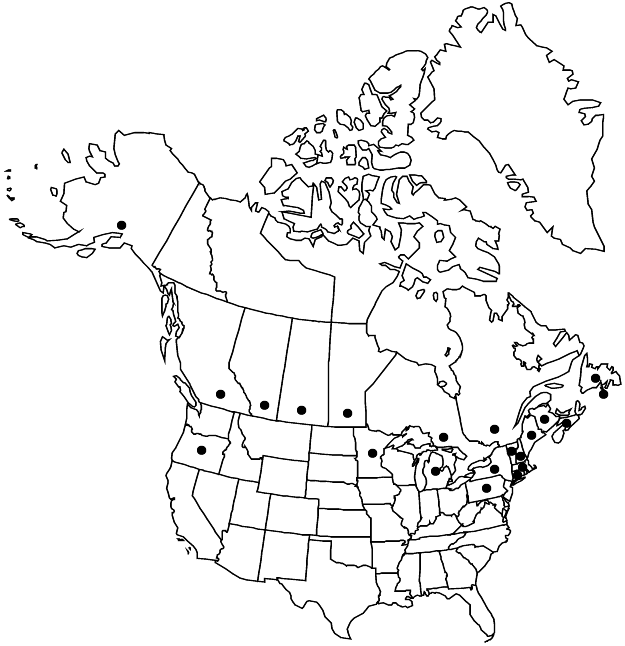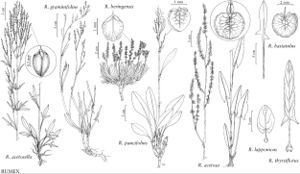Rumex acetosa
Sp. Pl. 1: 337. 1753.
Plants perennial, glabrous or nearly so, with short and relatively thin, horizontal or slightly oblique rootstock (usually not reaching deep into substrate) and ± crowded 2d-order roots. Stems erect or rarely ascending, 1 to several from base, branched in distal 1/2 (in inflorescence), (25–)30–90(–110) cm. Leaves: ocrea normally laciniate; blade oblong-ovate, ovate-lanceolate, to lanceolate, 4–10(–15) × 1–4(–6) cm, normally more than 2.5 times as long as wide, base sagittate (with acute lobes directed downward, ± parallel to petiole), margins entire, normally flat, apex acute or subacute. Inflorescences terminal, occupying distal 1/3 of stem, usually lax and interrupted especially in proximal part, narrowly paniculate, cylindric (with 1st-order branches simple, or with few 2d-order branches). Pedicels articulated near middle, filiform, 2–5(–6) mm, articulation distinct. Flowers (2–)4–8(–10) in whorls; inner tepals orbiculate, occasionally broadly ovate, 3–4(–5) × 3–4 mm, base rounded or cordate, apex obtuse; tubercles small or occasionally absent. Achenes black to dark brown, 1.8–2.5 × 1.2–1.5 mm, shiny, smooth. 2n = 14 (pistillate plants), 15 (staminate plants).
Phenology: Flowering spring–early summer.
Habitat: Waste places, meadows, cultivated fields, alluvial habitats
Elevation: 0-1000 m
Distribution

Introduced; St. Pierre and Miquelon, Alta., B.C., Man., N.B., Nfld. and Labr. (Nfld.), N.S., Ont., Que., Sask., Alaska, Conn., Maine., Mass., Mich., Minn., N.H., N.Y., Oreg., Pa., Vt., Europe, nw Africa, Asia.
Discussion
Rumex acetosa is morphologically uniform in North America. It sometimes is misidentified as R. hastatulus orR. acetosella. Collections from North America are few in herbaria, and this species probably is not as common in the flora area as has been generally assumed. Some literature reports for R. acetosa may refer to other taxa of the species group.
Selected References
None.
